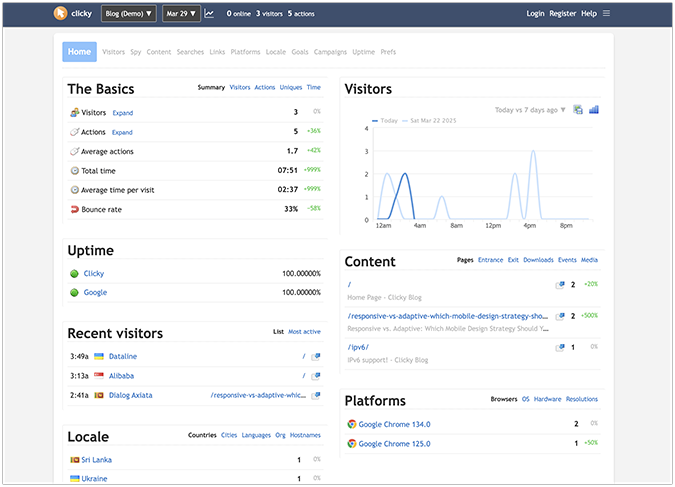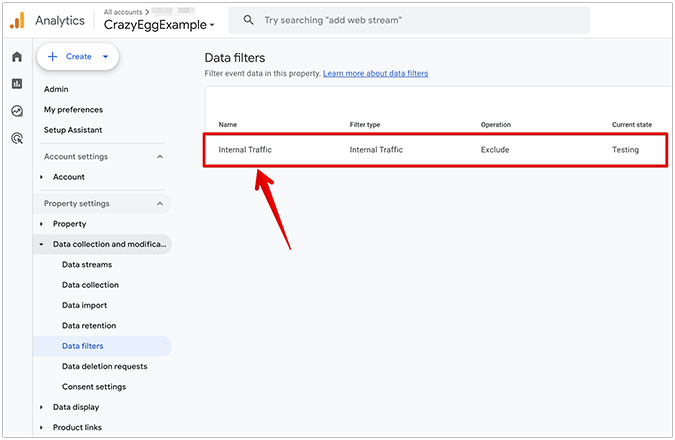A sales funnel is a way to track potential customers from initial contact to purchase. Anyone using the funnel, should be able to look at the status of an account and know exactly how to approach it.
Simple is good for a sales funnel. It needs to distill the messy process by which people actually become customers into clear stages.
If you are designing the first sales funnel for your organization, there are really only a few things you need to nail down. I’ll show you how to do it in three steps that will take less than an hour to complete.
What You Need Before You Build A Sales Funnel
There isn’t much, but you need to have a few things set up ahead of time.
A good understanding of your target market and ideal customer. I’ll leave it up to you to judge the level of market research necessary, but you should have a high degree of confidence that you are targeting the right people for your product or service.
Leads. You need leads. There is no point in trying to build or optimize an empty funnel. I am assuming you have leads you want to track in a sales funnel. But if not, I included a section later in this post that goes over a few strategies for lead generation to fill up the top of your sales funnel.
A tracking system. Use whatever you are comfortable with or have already set up. A CRM, sales engagement platform, low code app, or spreadsheet is fine.
Definitions for terms that everyone agrees on. This sounds trite, but it could not be more important. What is a lead? What is an opportunity? Everyone needs to be on the exact same page about what each status means. This includes sales reps, but also the marketing team. If they think a lead is one thing, but sales is expecting another, the funnel is not going to work efficiently, if at all.
Sales Funnel Definitions
Here are the definitions I will use:
- Lead: A potential customer who has not made a purchase yet.
- Prospect: This is a viable potential customer that has shown interest in your business and been “warmed up” by marketing or sales outreach.
- Opportunity: This is a prospect that sales is actively trying to close.
- Closed: This is an opportunity that is no longer being actively worked on by sales.
You should feel total license to use whatever terms make the most sense for your business. For example, teams running an accounts based marketing program, will likely want to distinguish between marketing qualified leads (MQLs) and sales qualified leads (SQLs).
As long as everyone agrees what the terms mean, and they align with your actual sales pipeline, you will be golden.
Where Does This Sales Funnel Come From?
The way I think of a sales funnel draws heavily on the work of Aaron Ross, most notably in his book Predictable Revenue. I’m not alone.
Tons of people have used the simple “assembly line” sales pipeline and cold calling sales funnel directly from that book.

Ross is still at it, and you can check out his site, which has tons of free sales resources to help you drive growth at your organization.
3 Steps To Build A Useful Sales Funnel
For the purposes of this post, I’ve simplified things quite a bit from the way Ross draws up his funnel. He is writing about enterprise sales specifically, and assumes you have a full team of business development reps, sales reps, account managers, and so on.
My funnel assumes that you have a company and some idea of the customers you want to sell to.
There are four stages that represent the status of an account in the sales funnel: lead → prospect → opportunity → closed deals that are won or lost.
Here it is visualized as a funnel:

As the person building a sales funnel, your most important responsibility is identifying the milestone events that separate one stage from the next.
Once you do that, building out the rest of your funnel is just filling in the blanks from there.
Step 1: Decide when a lead becomes a prospect
Sales has a finite amount of time to spend converting potential leads into paying customers.
If they waste too much time on the wrong potential customers, the company dies.
So it is extremely important for salespeople not to spend time chasing leads who have a low probability of working out, tiny deal size, etc.
What you need to define are the rules by which a lead flips from the fuzzy marketing funnel into the sales funnel where they will receive attention.

Typically, a lead becomes a prospect if they meet two criteria:
- They have expressed some degree of interest in your product
- They or their company is a viable customer
In terms of expressing interest in your product, typical triggers include:
- Reaching out to your company
- Following your brand on social media
- Signing up for a newsletter
- Downloading a whitepaper or case study
- Joining a webinar
- Signing up for a demo
- Visiting a trade show booth
Some of these are going to be more powerful triggers than others. The face-to-face meeting at a trade show signals a much greater degree of interest than a follow on LinkedIn.
But even a huge amount of interest doesn’t necessarily make a lead a good prospect. They have to be someone that can actually purchase your product and has a reason for doing so.
When thinking about the viability of a potential customer, some of the normal qualifications include:
- Budget: The company has the money to purchase and is willing to do so
- Authority: The person has the power to make spending decisions
- Need: The company has a real need for your product or service
- Timing: There is urgency to purchase
The BANT framework is very common in B2B. It’s going to help you make sure that reps are only qualifying leads that have a serious chance of ultimately making a purchase.
For some companies a prospect that meets BANT standards is worth going after whether or not they have shown some sort of active interest in your company. Maybe the potential deal-size is so lucrative that it’s worth the downside risk to pursue this “cold” account.
And if you have no leads in your funnel, well, you are going to have to start emailing and calling cold accounts if you want to get any results quickly.
To recap this step:
- Leads are pure potential in your marketing funnel. There may be some interest, they may be viable as customers.
- You need to decide what buyer characteristics and level of interest turn a lead into a prospect that is worth spending sales resources pursuing.
Step 2: Decide when prospects become opportunities
The next big event to define in the sales funnel is when prospects become opportunities that are worth trying to close.
At this stage, you are sending out proposals, spending time negotiating, and actively nudging the opportunity towards a purchase.
This is a huge step up in terms of the resources you are going to have to spend, so you want to be really sure that the prospect is worth moving on to this stage.

Typically, prospects are move down funnel to opportunities when:
- Sales is working on proposals and negotiating the terms of the deal
- They are speaking directly with the ultimate decision maker(s)
You have to be really ruthless about qualifications here. Salespeople that spend time on proposals that don’t close are wasting a tremendous amount of valuable time.
By this point, all of the BANT framework elements need to be absolutely rock solid. Your team has done enough research to make sure that the company has the budget and is willing to spend. This is the right time for the company to make this purchase. There is urgency in ongoing conversations.
And most of all, your team is dead sure that the person they are speaking with actually has the authority to rubber stamp the final payment. There is no sense in putting together a proposal for someone who is really interested but doesn’t have purchasing power.
Step 3: Add in the standard pipeline stages
At the top of the funnel you add all your sources of leads: these are the contacts that come from inbound marketing, PPC, organic search, business development, or purchased lists.
In the first two steps, you set up the rules for how a lead → prospect, and a prospect → opportunity, so the hard part is done.
The middle of your funnel is ready to rock.
Now just add the close at the bottom of the funnel, and you will have captured the complete process:

The transition from opportunity to closed is straightforward. Do you close the deal, or not?
There are really only three outcomes you need to track:
- Closed – Won: You successfully closed the opportunity and they made a purchase.
- Closed – Lost: You did not close the opportunity, and it doesn’t make sense to pursue.
- Closed – Lost CBQ: You did not close the opportunity, but it’s worth checking back quarterly.
I’m not going to belabor the point here. Either you win or lose the deal. And, if you lose the deal, record whether or not it’s worth reaching out at a later date. Sometimes it really is a timing issue. Next quarter could be sunnier skies for a deal.
A lot of the time, though, a final no is it. And you want to make sure that a future rep doesn’t go down the same road to nowhere with this seemingly promising account.
Congratulations. You are done, and it probably hasn’t even been an hour yet.
Getting Leads For a Sales Funnel
If you don’t have any leads, you have a ton of options for getting them. The best way will depend on your budget and the skills of your team.
For the fastest results, start cold calling. I know it is brutal, but it works and you will learn a ton of great information about what your target audience really cares about.
You can buy lists of contacts to start calling or you can build your own list.
Purchased lists are never that great, in my experience, so I’d recommend list-building on your own.
This is hard, gritty work, but you can use the internet and common sense to run down the contact information for businesses that are likely to want your product. Using services like SignalHire and Hunter.io can help you find valid contact information for the right person at the organization to talk to.
In addition to cold calling, there is email marketing, which is a lot less expensive to scale. These campaigns are also a lot easier to run and track, so you should definitely consider this option if you are going to the trouble of list-building.
Using paid advertising is another method with a fast turnaround time. In this case, you’ll want to direct ads to a landing page where you can capture leads.
Of course, paid search can get pretty expensive, but generating leads through organic search will take months (at best) if you are starting from scratch with no inbound flow yet.
Social media marketing may be of value if you have a strong presence already, but the quality of leads that come in through this channel vary widely. Yes, it’s becoming more important for B2B brands, but it’s not always going to deliver the most high-intent traffic.
Digital marketing strategies work. Keep experimenting. You will find the right channel and get the leads you need for your sales funnel.




